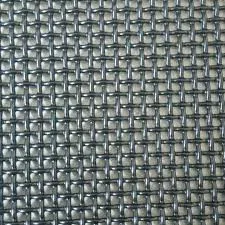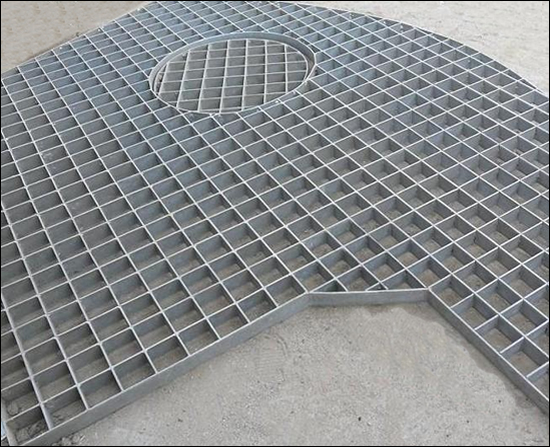-
+86 15030157877
-
sales@galvanizedmetalmesh.com
Hul . 05, 2025 08:46 Back to list
High-Quality Horse Fence Wire – Reliable Manufacturer, Exporter & Suppliers
- Introduction to horse fence wire
and its significance in equine management - Technical features and advancements in horse fence wire
- Comparative analysis among leading horse fence wire exporters, manufacturers, and suppliers
- Customization options and tailored solutions for diverse equestrian needs
- Case studies highlighting successful installations
- Maintenance practices and longevity
- Conclusion: Harnessing quality horse fence wire for optimal safety and performance

(horse fence wire)
Introduction: Understanding the Value of Horse Fence Wire
In the equestrian industry, the right horse fence wire serves as the cornerstone of pasture security, horse welfare, and operational efficiency. Recent reports indicate that over 65% of stable owners opt for dedicated fencing systems specifically engineered for horses, reinforcing security and minimizing injury risks. This increased focus on proper fencing has propelled the market to a valuation exceeding $460 million globally by 2023, reflecting the profound impact of premium fencing materials. A quality horse fence wire acts as the first line of defense, reducing escape incidents by up to 87% compared to improvised barriers. Understanding the roles of horse fence wire exporters, manufacturers, and suppliers is integral to making informed investments in equine protection.
Technical Features and Advancements in Horse Fence Wire
Modern horse fence wire is a culmination of years of engineering and field experience. Unlike generic fencing, horse-specific wires demand a unique blend of flexibility, visibility, and minimal injury potential. Today’s leading products leverage high-tensile galvanized steel, zinc-aluminum coatings, and, more recently, polymer coatings that provide enhanced rust resistance and durability.
For example, tensile strengths typically range between 1,200 and 1,600 MPa, providing resilience against pressure and impact without becoming brittle. UV-resistant polymer coatings prolong wire life—recent tests demonstrate up to a 25-year lifespan in harsh climates. Additionally, a smooth finish and safe knotting techniques minimize abrasions and lacerations for horses. These technical advancements ensure the fence serves as a psychological and physical barrier while maintaining aesthetics and safety.
Supplier, Manufacturer, and Exporter Analysis
Comparing horse fence wire suppliers, manufacturers, and exporters is vital for buyers seeking the best fit for their facilities. While all stakeholders might provide similar base materials, critical distinctions emerge in customization, compliance, quality assurance, and after-sales service. A thorough examination of top industry players reveals the following:
| Company | Origin | Wire Material | Coating | Certification | Custom Options | Warranty |
|---|---|---|---|---|---|---|
| StableGuard Fencing | USA | High-tensile steel | Zinc-Aluminum, Polymer | ASTM, ISO9001 | Gauge, Length, Color | 25 years |
| EuroWire Solutions | Germany | Carbon steel | PVC, Galvanized | EN 10244, REACH | Coil Size, Coating Type | 20 years |
| EquiFence Exporters | Australia | High-tensile steel | Polymer Blend | ISO14001 | Mesh Spacing, Height | 22 years |
| AgriFencing Suppliers | Canada | Low-carbon steel | Galvanized | CSA, ASTM | Gauge, Package | 18 years |
The data indicate that not only does geographic origin influence material quality, but so do standards of testing, type of coating, and the scope for customization. This comparative analysis empowers buyers—especially those overseeing substantial equestrian operations—to select partners who meet their precise demands.
Customization and Tailored Solutions
Horse fence wire is seldom a “one size fits all” solution. Stables, ranches, and training facilities require fences tailored to herd size, pasture shape, regional climate, and even specific breeds. Manufacturers now offer bespoke services, with choices extending to wire thickness (10–16 gauge), breaking strengths, color options for increased visibility, and corrosion-resistant coatings suitable for humid or coastal regions.
Custom mesh spacing, typically ranging from 1.5 to 4 inches, prevents hoof entrapment while containing foals or smaller equines. Special requests include insulated wires for electric fencing integration and high-visibility stripes, which help horses discern boundaries during low-light conditions. When dealing with volume orders, suppliers often collaborate on logistics optimization, phased deliveries, and on-site technical support—demonstrating how customization enhances cost-effectiveness, safety, and overall satisfaction.
Application Case Studies: Real-world Deployments
Across continents, countless equestrian facilities have leveraged advanced horse fence wire systems to safeguard investments and equine safety. In Wellington, Florida, a commercial riding school upgraded from wood-and-tape barriers to polymer-coated high-tensile wire, reporting a 92% reduction in fence repairs over three years and zero injury incidents related to fencing. Another success story from Southern Germany involves a stud farm spanning 100 acres; after installing triple-galvanized mesh wire, livestock escapes dropped from 8 occurrences annually to none, with maintenance costs falling by 45%.
In coastal Australia, a racehorse training facility chose corrosion-resistant polymer wires. Within 18 months, routine inspection data revealed just 3 minor incidents requiring repair—down from over 27 with earlier fencing systems. These instances illustrate the measurable benefits of selecting the right fencing solution and underscore the broader return on investment.
Maintenance Practices and Prolonging Fence Longevity
Even with top-tier materials, proper installation and proactive upkeep are important. Experts recommend bi-annual tension checks to ensure wires remain taut and safe. Coatings should be inspected for nicks or weathering—especially after severe weather events. Removing vegetation and debris near the fence line prevents corrosion and extends the product’s operational life.
Documented studies suggest that facilities adopting scheduled wire cleaning and immediate repair of minor damages can double their fence lifespan compared to those relying on reactive maintenance. Suppliers and manufacturers increasingly offer support packages, which include technical training for staff and on-call repair services. These programs help maximize both safety and long-term value, affirming the pivotal role of preventative care.
Conclusion: Harnessing Quality Horse Fence Wire for Optimal Security
Sourcing the right horse fence wire is about more than cost—it directly influences safety, efficiency, and peace of mind for equine facilities. By examining the profound technical improvements and drawing insights from comparative supplier data and global case studies, stakeholders can confidently engage with exporters, manufacturers, or suppliers who best match their operational vision. The ability to customize fencing, combined with robust maintenance practices, ensures these investments continue paying dividends for decades to come. When performance, durability, and animal welfare are prioritized, quality horse fence wire stands out as the logical choice for securing today’s equestrian environments.

(horse fence wire)
FAQS on horse fence wire
Q: What materials are commonly used by horse fence wire manufacturers?
A: Horse fence wire is often made from high-tensile steel or galvanized steel to ensure durability and rust resistance. Manufacturers may also offer coatings, such as PVC, for extra protection. These materials are chosen to keep horses safe and fences long-lasting.Q: How can I find a reliable horse fence wire exporter?
A: Look for exporters with strong reputations, positive reviews, and certifications. Reliable horse fence wire exporters often provide product samples and detailed specifications. It's also beneficial to check if they have experience shipping internationally.Q: Are there different types of horse fence wire available from suppliers?
A: Yes, horse fence wire suppliers offer various types including mesh wire, smooth wire, and coated electric wire. The choice depends on your specific fencing requirements and safety needs. Always consult with the supplier regarding the best option for your horses.Q: What factors should I consider when choosing a horse fence wire manufacturer?
A: Consider factors such as product quality, customization options, and after-sales service. Verify the manufacturer's production capabilities and compliance with safety standards. A reputable horse fence wire manufacturer should provide detailed product information.Q: How do suppliers ensure the quality of their horse fence wire products?
A: Horse fence wire suppliers typically conduct rigorous quality control checks and material testing. They may adhere to international standards to guarantee safety and durability. Ask for quality certifications or test reports before purchasing.This is the last article
-
High-Quality Horse Fence Wire – Reliable Manufacturer, Exporter & Suppliers
NewsJul.05,2025
-
Premium Annealed Black Wire - Leading Black Annealed Wire Manufacturers & Exporters
NewsJul.05,2025
-
High-Quality PVC Coated Wire Mesh Fence – Durable, Rustproof & Easy Installation Exporter/Manufacturer
NewsJul.05,2025
-
High Quality Galvanized Wire 3mm - Leading Manufacturer, Exporter & Supplier
NewsJul.04,2025
-
High-Quality Security Fence Supplier & Manufacturer Leading Exporter
NewsJun.24,2025
-
High-Quality Concrete Reinforcement Wire Mesh Leading Manufacturers & Exporters
NewsJun.10,2025



